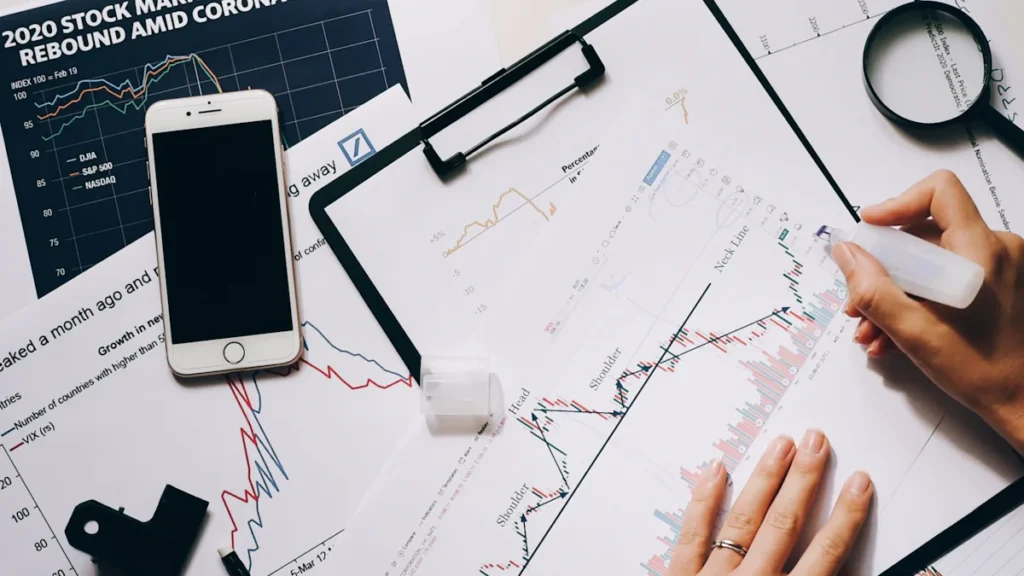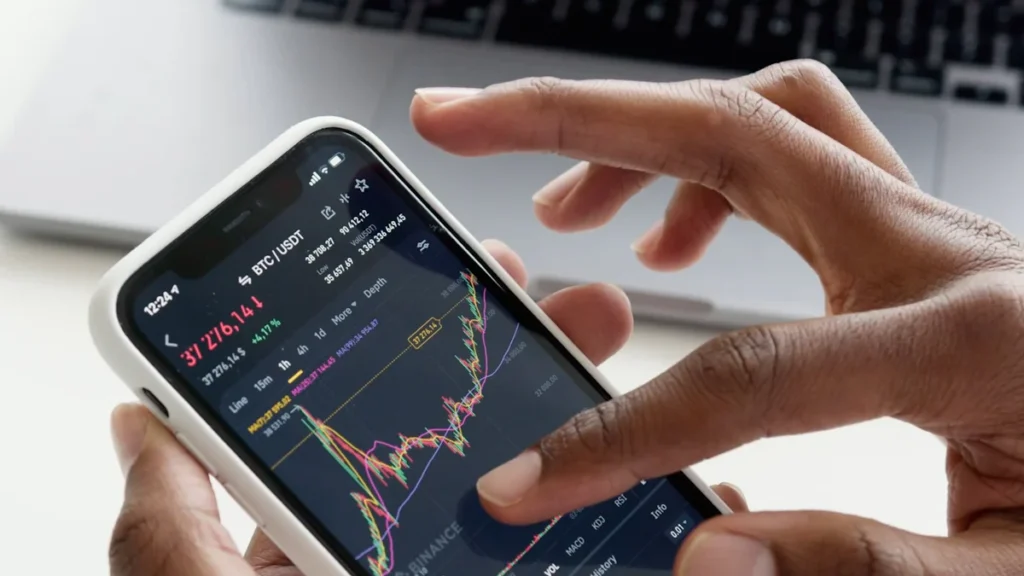Understanding Commodity Exchanges: Definition and Types

Commodity exchanges serve as organized markets where you can trade various commodities like metals, energy, and agricultural products. These exchanges play a crucial role in the global financial market by facilitating the buying and selling of enforceable contracts. This structure ensures fair trading practices and price stability. In 2021, global commodity prices surged to record highs, significantly impacting trade values. For instance, U.S. exports of corn grew by $9.4 billion due to these price increases. Such dynamics highlight the importance of commodity exchanges in shaping economic trends and influencing trade patterns worldwide.
Definition and Importance of Commodity Exchanges
https://4d936lqal00tgxfdugwc6b8sd1.hop.clickbank.net
What Are Commodity Exchanges?
Commodity exchanges serve as structured platforms where you can trade various commodities. These exchanges provide a marketplace for buying and selling enforceable contracts related to commodities like metals, energy, and agricultural products. By offering standardized contracts, commodity exchanges simplify the trading process and help in price discovery. You will find that these exchanges operate under strict regulations to ensure fair trading practices and maintain price stability. This structure makes it easier for you to engage in trading activities with confidence.
Importance in the Financial Market
Commodity exchanges hold significant importance in the financial market. They act as a barometer for global economic health by reflecting supply and demand dynamics. When you participate in these exchanges, you contribute to the liquidity and efficiency of the market. The exchanges also provide a platform for hedging against price volatility, which is crucial for businesses involved in the production or consumption of commodities. By engaging in commodity exchanges, you can manage risks associated with fluctuating prices, thereby stabilizing your financial planning.
Bajaj Financial Securities Limited’s Role in Commodity Exchanges
Bajaj Financial Securities Limited plays a pivotal role in the landscape of commodity exchanges. As a subsidiary of Bajaj Finance Limited, it operates as a corporate trading and clearing member of major exchanges like the Bombay Stock Exchange Ltd. (BSE) and the National Stock Exchange of India Ltd. (NSEIL). Although Bajaj Financial Securities Limited does not offer advisory services, it provides essential updates sourced from the public domain. These updates can help you make informed decisions when engaging in commodity exchanges. However, you should independently evaluate these updates and consult professional advisors before making investment decisions. This approach ensures that you take responsibility for your investment choices, minimizing potential risks.
Types of Commodity Exchanges

Commodity exchanges categorize commodities into two main types: hard commodities and soft commodities. Understanding these categories helps you navigate the trading landscape more effectively.
Hard Commodities
Hard commodities consist of natural resources that require mining or extraction. These commodities often serve as the backbone of industrial economies.
Metals
Metals like gold, silver, and copper fall under hard commodities. You will find that metals play a crucial role in various industries, from electronics to construction. The demand for metals often fluctuates based on industrial needs and geopolitical factors. For instance, when industrial production increases, the demand for metals typically rises, impacting their prices.
Energy
Energy commodities include oil, natural gas, and coal. These resources power industries and homes worldwide. You might notice that energy prices can be volatile due to geopolitical tensions and changes in supply and demand. For example, a disruption in oil supply can lead to significant price hikes, affecting global markets.
https://92d5fcqan2218z28s6q958-c-r.hop.clickbank.net
Soft Commodities
Soft commodities refer to agricultural products and livestock. These commodities are generally grown or ranched, making them more susceptible to environmental factors.
Agriculture
Agricultural commodities encompass products like wheat, corn, and coffee. Weather conditions and crop yields significantly influence their prices. You may observe that a drought in a major wheat-producing region can lead to a spike in wheat prices globally. This volatility presents both challenges and opportunities for traders.
Livestock
Livestock commodities include cattle and hogs. These commodities depend on factors such as feed costs and disease outbreaks. When you trade in livestock, you must consider these variables, as they can affect supply and demand cycles. For instance, an outbreak of disease can reduce livestock numbers, leading to increased prices.
How Commodity Markets Work
Understanding how commodity markets work can enhance your trading strategies and investment decisions. These markets operate as platforms where you can trade various commodities, such as metals, energy, and agricultural products. The commodity market facilitates the buying and selling of these goods through standardized contracts, ensuring a smooth trading process.
Trading Process in Commodity Exchanges
The trading process in commodity exchanges involves several key steps. First, you need to select a commodity to trade. Once you have chosen, you can enter the market through a broker or an online trading platform. The exchange provides a regulated environment where you can buy or sell contracts based on the commodity’s future price. This process ensures transparency and fairness, allowing you to engage confidently.
Commodity exchanges often use electronic trading systems, which enhance efficiency and speed. You can place orders quickly and monitor market trends in real-time. This setup helps you make informed decisions and react promptly to market changes. Additionally, exchanges offer various tools and resources to assist you in analyzing market data and predicting price movements.
Role of Futures and Options Contracts
Futures and options contracts play a crucial role in commodity markets. A commodity futures contract is an agreement to buy or sell a specific quantity of a commodity at a predetermined price on a future date. These contracts help you hedge against price fluctuations, providing a way to manage risk. For instance, if you are a farmer, you can lock in a price for your crops, protecting yourself from potential price drops.
Options contracts, on the other hand, give you the right, but not the obligation, to buy or sell a commodity at a specified price within a certain period. This flexibility allows you to capitalize on favorable price movements while limiting potential losses. Both futures and options are essential tools for managing risk and optimizing returns in commodity market investments.
Commodity Trading and Market Demand
Commodity trading heavily depends on market demand. The demand for commodities can fluctuate due to various factors, including economic conditions, geopolitical events, and technological advancements. For example, an increase in industrial production can boost the demand for metals, driving up their prices. Conversely, a surplus in supply can lead to price declines.
The commodity market works similarly to other financial markets, where supply and demand dynamics influence prices. By understanding these dynamics, you can make strategic decisions and identify profitable opportunities. Engaging in commodity markets investing requires you to stay informed about global trends and market developments. This knowledge enables you to anticipate changes in demand and adjust your trading strategies accordingly.
Relationship with Other Financial Markets
Understanding how commodity exchanges interact with other financial markets can enhance your investment strategies. These interactions reveal the unique characteristics of commodities and their role in a diversified portfolio.
Comparison with Stock Market
Commodity exchanges and the stock market serve different purposes and attract various types of investors. When you invest in stocks, you essentially buy a share of ownership in a corporation. This ownership entitles you to a portion of the company’s profits and assets. In contrast, commodity exchanges facilitate the trading of physical goods and derivative contracts, such as futures contracts. These contracts allow you to speculate on the future price of commodities like metals, energy, and agricultural products.
Commodities often exhibit an inverse relationship with stocks. When stock prices fall, commodities tend to rise, offering a hedge against market volatility. This inverse relationship provides diversification benefits, helping you mitigate risks associated with a stock-heavy portfolio. Additionally, commodities can act as a hedge against inflation, preserving your purchasing power when prices rise.
Commodity brokers play a crucial role in this market by offering lower margin trading compared to stock brokers. This feature allows you to leverage your investments, potentially increasing your returns. However, it’s essential to understand that commodity prices heavily depend on supply and demand dynamics, making them more volatile than stocks.
Interaction with Bond Market
The bond market, like the stock market, offers a different investment avenue compared to commodity exchanges. Bonds represent a loan made by you to a borrower, typically a corporation or government, in exchange for periodic interest payments and the return of the bond’s face value at maturity. This market is generally considered less volatile than commodities, providing a stable income stream.
Commodities markets demonstrate a unique interaction with the bond market. When bond market returns decline, commodities often become more attractive due to their potential for higher returns. This shift occurs because commodities can offer protection against inflation, which erodes the real value of fixed-income investments like bonds.
In times of economic uncertainty, you might notice that commodities and bonds can move in opposite directions. While bonds provide safety and stability, commodities offer growth potential and inflation hedging. This dynamic makes commodities a valuable addition to a diversified investment portfolio, balancing the risks and rewards of different asset classes.
Commodity exchanges in India, such as the National Multi Commodity Exchange and the Indian Commodity Exchange, play a significant role in facilitating these interactions. They provide a platform for trading commodity derivatives, allowing you to engage in commodity market operations with confidence. By understanding the relationship between commodity exchanges and other financial markets, you can make informed decisions and optimize your investment strategy.
https://c9df6iy4u112jx8m3nx2796m1m.hop.clickbank.net
Types of Traders in Commodity Exchanges
In the world of commodity exchanges, you will encounter various types of traders, each playing a unique role in the market. Understanding these roles can help you navigate the complexities of trading and make informed decisions.
Hedgers and Speculators
Hedgers and speculators are two primary types of traders you will find in the commodity market. Each has distinct objectives and strategies.
Hedgers aim to mitigate risk rather than seek speculative profits. They use futures contracts to lock in prices for their commodities, ensuring financial stability. For example, as a wheat farmer, you might secure a price for your harvest months in advance. This strategy allows you to plan your finances better and avoid the uncertainties of fluctuating market prices. Hedging also benefits consumers by maintaining steady prices for goods. Manufacturers, for instance, can manage production costs effectively when they know the price of raw materials in advance. By contributing to market stability, hedgers make the commodity exchange a safer environment for all participants.
“Hedgers play a vital role in the commodity market, as they are primarily concerned with mitigating risk rather than making speculative profits.” – Commodity Market Expert
Speculators, on the other hand, take positions in assets with the expectation of profiting from changes in market prices. They possess a risk-seeking appetite and provide liquidity in the market, benefiting all participants, including hedgers. As a speculator, you might predict the direction of market prices before signing a futures contract. Depending on the accuracy of your forecast, you could realize positive or negative returns. Speculators play a critical role in the commodity market by enhancing liquidity and enabling efficient price discovery.
“Speculators take positions in assets with the expectation that the asset will change in value in a way that will be profitable to the speculator.” – Commodity Market Expert
Market Demand and Supply
Market demand and supply dynamics significantly influence the commodity market. As a trader, understanding these factors is crucial for making strategic decisions.
Market demand for commodities can fluctuate due to various factors, including economic conditions, geopolitical events, and technological advancements. For instance, an increase in industrial production can boost the demand for metals, driving up their prices. Conversely, a surplus in supply can lead to price declines. By staying informed about global trends and market developments, you can anticipate changes in demand and adjust your trading strategies accordingly.
The commodity market operates similarly to other financial markets, where supply and demand dynamics influence prices. Producers and consumers of commodity goods access them in centralized and liquid markets. These market actors can also use commodity derivatives to hedge future consumption or production. Speculators, investors, and arbitrageurs actively participate in the commodities trade, contributing to the market’s vibrancy and efficiency.
“Producers and consumers of commodity products can access them in centralized and liquid commodity markets.” – Commodity Market Expert
By understanding the roles of hedgers and speculators, along with the impact of market demand and supply, you can enhance your trading strategies and optimize your investment decisions in the commodity market.
Price Determination in Commodity Exchanges

Understanding how prices are determined in commodity exchanges can enhance your trading strategies. Prices in these markets are influenced by various factors, primarily market demand and supply dynamics, along with external influences.
Market Demand and Supply
Market demand and supply play a crucial role in determining commodity prices. When demand for a commodity increases, prices tend to rise. Conversely, an increase in supply usually leads to a decrease in prices. In 2021, global commodity prices surged due to increased demand and supply disruptions. For example, the annual average price index for energy rose by 82 percent, while agriculture and metals saw increases of 23 percent and 47 percent, respectively. These changes were largely driven by the relaxation of pandemic-related lockdowns, which boosted demand across various sectors.
You can observe that the value of U.S. imports for commodity-driven sectors increased by 36.8 percent compared to 16.6 percent for non-commodity sectors. Similarly, U.S. exports for commodity sectors rose by 35.1 percent in 2021, compared to 17.1 percent for non-commodity sectors. These statistics highlight how shifts in demand and supply directly affect commodity prices.
External Influences on Prices
External factors also significantly affect commodity prices. Weather-related events, geopolitical tensions, and economic cycles can all impact the supply and demand balance. In 2021, weather-related disruptions affected markets for many raw materials, leading to price increases for a range of commodities. For instance, adverse weather conditions can reduce agricultural yields, causing prices to spike due to limited supply.
Geopolitical events can also create uncertainty in commodity markets. Tensions in oil-producing regions might disrupt supply chains, leading to volatility in energy prices. Additionally, global economic cycles influence commodity prices. During periods of economic growth, demand for commodities typically rises, pushing prices higher. Conversely, during economic downturns, demand may decrease, leading to lower prices.
By understanding these factors, you can better anticipate price movements in commodity exchanges. Staying informed about global trends and external influences will enable you to make strategic decisions and optimize your investment outcomes.
Importance of Investing in Commodities
Investing in commodities offers several advantages that can enhance your financial portfolio. By understanding these benefits, you can make informed decisions and optimize your investment strategy.
Diversification Benefits
Commodities provide a unique opportunity for diversification. When you include commodities in your investment portfolio, you reduce risk by spreading your investments across different asset classes. Unlike stocks and bonds, commodities often move independently of traditional financial markets. This independence means that when stock prices fall, commodity prices might rise, offering a buffer against market volatility.
“Including commodities in a well-structured portfolio can enhance risk-adjusted returns and provide a hedge against inflation and geopolitical uncertainties.”
Exchange-Traded Funds (ETFs) offer a practical way to diversify your investments in commodities. They allow you to invest in a broad range of commodities without the need to purchase physical goods. ETFs provide more diversification and lower risks compared to futures, which are more speculative and carry higher risks, especially when margin is used.
Inflation Hedging
Commodities serve as a strong hedge against inflation. As inflation rises, the prices of commodities like precious metals and crude oil tend to increase. This price rise protects the real value of your investments. For instance, when inflation accelerates, the demand for goods and services increases, leading to higher prices for the commodities used to produce those goods and services.
“Because commodities prices typically rise when inflation is accelerating, they offer protection from the effects of inflation.”
Investors in commodities such as gold or oil often see a steady appreciation of their assets even during periods of economic instability. This makes commodities a valuable addition to your investment strategy, especially if you are risk-averse and seek security in your investments.
https://fiscalfitnessflow.com/index.php/2025/06/10/investor-behavior-psychology-behind-investment-decisions/
Returns from Commodity Trading
Commodity trading can yield significant returns, especially when you capitalize on market trends and price movements. By engaging in commodity markets, you can benefit from the continuous auction markets and clearinghouses that provide the latest information on supply and demand. This real-time data allows you to make strategic decisions and optimize your returns.
“Futures markets are thus used as continuous auction markets and as clearinghouses for the latest information on supply and demand.”
While commodity trading involves risks, the potential for high returns makes it an attractive option for many investors. By staying informed about global trends and market developments, you can anticipate changes in demand and adjust your trading strategies accordingly. This proactive approach can lead to profitable opportunities and enhance your overall investment outcomes.
Commodity exchanges offer you a structured platform for trading various commodities, providing opportunities for diversification and inflation hedging. However, trading in these markets involves risks due to external factors like geopolitical events and market volatility. You should assess your risk tolerance and investment goals before engaging in commodity trading. Understanding the market dynamics and employing prudent risk management strategies can help you navigate these complexities. Consider incorporating commodities into your investment strategy to enhance portfolio diversification and potentially improve returns.





